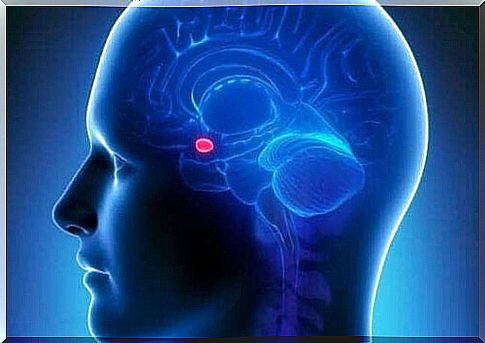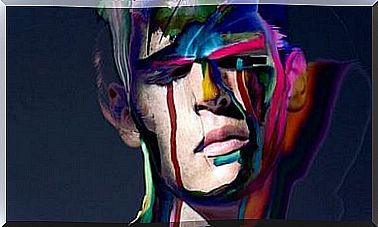The Arzy Experiment: The Ghosts Are In My Head

The Arzy experiment has tried to prove something few have dared to do in the past. For a long time, everything related to changes in our perception, such as seeing shadows or feeling a presence, has been treated as paranormal things. But thanks to new techniques for brain research, we can now study most of this through a scientific lens.
Everyone has felt at least once that someone looked at them. Even if you have probably been in doubt about your own senses, it does not make you “crazy”. This is because the brain is such a complex sensory apparatus that any changes can lead to errors in perception.
The Arzy experiment
Shahar Arzy is a professor at the Swiss Federal Institute of Technology, Lausanne, Switzerland. He has proven that there is a physiological aspect of hallucinatory conditions and brain areas involved in multisensory assimilation.
Feeling that someone else is near you when it is not, is something that has been described by both psychiatric patients and mentally stable people.

How did he carry out the experiment?
In his experiment, Arzy managed to evoke a sensation that there was another shadow in the space of a subject. He did this through focal electrical stimulation.
Arzy conducted the experiment on a subject who had no history of mental problems. He stimulated the subject’s temporoparietal junction (TPJ). Each time Arzy stimulated this area, the subject began to feel that there was a shadow behind him.
Variations of the Arzy experiment
Arzu repeated the experiment on the subject in other positions, but the shadow will always be in the same place with respect to the subject. This suggests that the shadow is simply a projection of our own body.
This is likely to occur due to a multi-sensory or sensory-motor processing change as a result of TPJ stimulation. What makes it even more interesting is that we used to link TPJ to self-treatment and the distinction between the self and others.
The Arzy experiment: The role of TPJ
As the name suggests, the temporoparietal junction is the part of the brain where parietal and temporal lobes meet. The parietal lobe has a strong relationship to the body’s somatosensory and motor mapping.
The temporal flora deals with language processing and creates connections with subcortical areas for emotional processing. But the meeting point between these two patches, TPJ, is not just a place for multisensory assimilation. It is also related to self-treating cognitive aspects.
TPJ and out-of-body experiences
The Arzy experiment focused on an intense activation of this part of the brain because it treats things like:
- Mental images of yourself.
- Visually-spatial perspective and location.
- The distinction between self and others.
- Vestibular and multisensory assimilation.
When Arzy stimulated TPJ in this experiment, the subject did not experience the shadow as a projection of himself. They experienced it as a presence outside. This phenomenon is due to the role of the temporal lobe in our linguistic self-esteem.
The feeling that someone else is there
The first question you may ask yourself after reading about the Arzy experiment is: how come we are not aware of this level of dissociation ? Should we be? The experiment suggests that these sensations feel external to the subjects. The theory is that the brain’s “sense of self” is extremely fragile.
Any structural, electrical or functional change can therefore lead to errors in perception. In other words, our sense of self, or our ability to distinguish between the perception of our own body and everything else, is not as stable as we thought.
The Arzy Experiment: The Role of the Amygdala
The amygdala is a subcortical structure that is part of the brain’s limbic system. This nervous system structure is a fundamental part of the treatment of the emotional side of our experiences.
Any changes caused by TPJ stimulation feel foreign to your brain, which is why your immediate reaction is fear. You are not used to the feeling of experiencing your body as outside yourself. Therefore, the amygdala produces a negative emotional response that can often end up aggravating the hallucinations.

What kind of experiences can this sensory illusion lead to?
The experiences can be very varied. From a clinical point of view, the overall experience will be “outside the body experiences”. The most common are:
- It feels like you’re floating.
- You look at your body from the outside yourself.
- You feel an external presence.
- You have extremely clairvoyant thoughts and dreams.
Are these experiences signs of mental illness?
As Arzy shows in his experiment, these experiences can occur just as often in subjects without historical mental health problems.
However, there are some conditions where people experience unusual things due to brain changes. For example:
- Sleep paralysis. These are associated with hypnagogic and hypnopompic hallucinations. Sleep paralysis is when a person wakes up before he has control over his body. They will try to move, but can not because of the muscle paralysis. As a consequence, the brain’s perception of movement is changed.
- Epilepsy and intense migraines. Electrical brain changes can cause similar effects as Arzy described in the experiment.
- Neurodegenerative diseases. Hallucinations are very common with these diseases. Deterioration of nerve tissue leads to sensory assimilation problems. In most cases, older people who experience this will associate the external presence with a dear friend or family member.
But there are also some cases where the sensory processing can be disturbed for other reasons:
- Excessive stress.
- Lack of sleep.
- Sensory deprivation.
Our brain is fascinating!
The Arzy experiment will surprise even the most skeptical readers. Our ability to recognize our own bodies is so much more complex and fragile than we would think.
But that’s not all. Part of the problem is also that we have just considered these things as “paranormal” for a long time. But now science is proving that this is not always the case.
Seeing a shadow while walking or thinking that a doll is a person is similar to small hallucinations. There are small errors in perception that do not say anything about your mental health. However, understanding more about why they happen can help us better understand ourselves.









